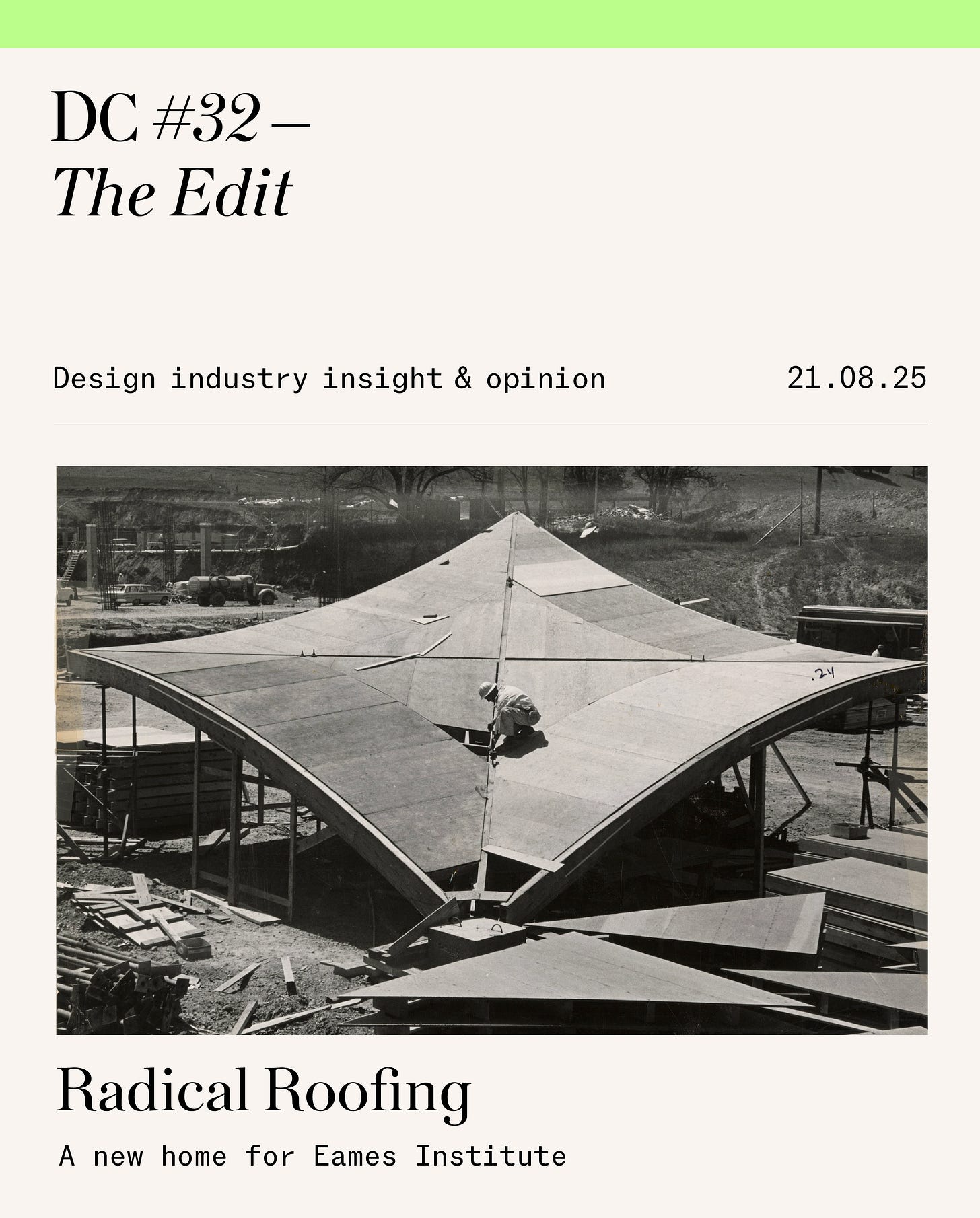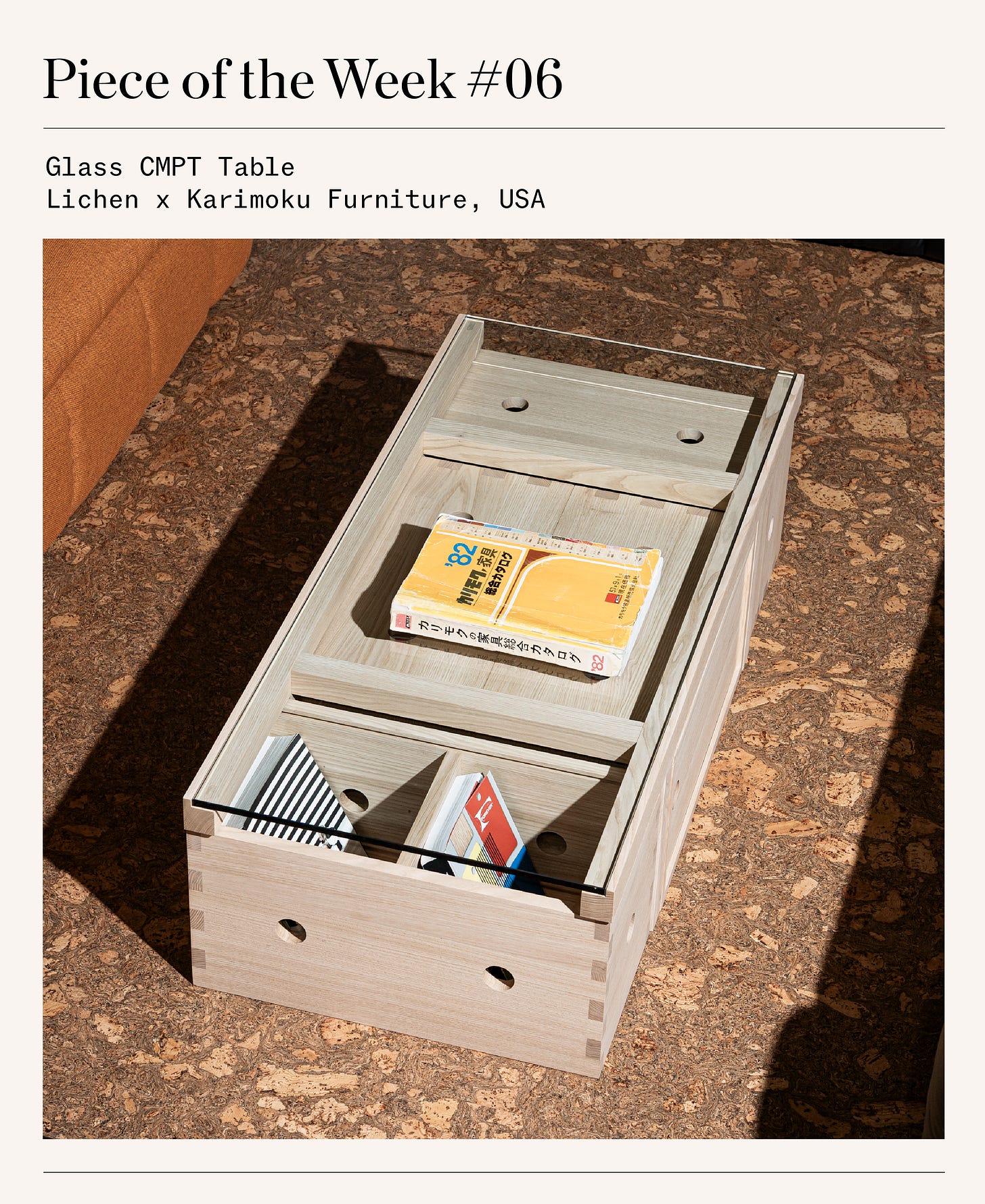Design Considered #32
Industrial beauty, a functional find for the home, and a refined list of good design...
#01 - Opening Thought
Poring through the brilliant Birkenstock archive (250 years of shoemaking history!) for the brand’s Book of Birkenstock, a project I recently worked on, I was struck by images of the incredible modernist structure that once housed its US distribution. This summer, the now-unused building was bought by the Eames Institute of Infinite Curiosity, which will bring this beauty back to life, assisted by Swiss architects Herzog & de Meuron and locals EHDD. I couldn’t be happier.
Designed in the early 1960s by John Savage Bolles for publisher McGraw‑Hill, the Californian site pairs a sculpturally roofed warehouse with a handsome, hulking office block. Beyond its sheer beauty, the warehouse roof (pictured in production) is a feat of function: the thin-shell, hyperbolic-paraboloid concrete lid set on a wide structural grid creates spacious column-free bays. The good news for the Institute—which stewards a 40,000-object Eames collection and has recently expanded into publishing with acquisitions of William Stout Architectural Books and Lars Müller Publishers—is that it’s almost a perfect template to operate a museum from. Its partly subterranean design offers thermal stability and precise control over natural light, making it ideally suited for exhibition programming.
#02 - For Your Consideration
LinkedIn is not all slop and show-offs — there are some genuine legends on there. One worth following is IKEA CEO Jesper Brodin, who walks the talk when it comes to the brand’s values. Catch him clearing dishes in the staff kitchen of the Helsingborg branch and explaining the importance of the company’s anti-bureaucracy stance here.
Sticking with no-nonsense communications – Japan House (funded by Japan’s Ministry of Foreign Affairs, with hubs in London, Los Angeles and São Paulo) is showcasing the precise craft of pictogram creation at its UK outpost. The exhibition traces Japan’s influence on global visual language from the pioneering 1964 Tokyo Olympic system through to the smart signage visible across the nation today.
Design media today sadly too often descends into regurgitating press releases or pushing pretty press imagery on social media without much critical thought. Thankfully, quality editorial inspiration is increasingly coming from the practitioners themselves. One standout is the Spanish architecture studio Mesura. The firm’s essays — like this one on Le Corbusier’s La Tourette — are both beautifully photographed and sharply written, offering original thinking and visual depth.
Of course, there’s still proper design journalism being done on the right platforms. Konfekt editor Sophie Grove’s insights are always pertinent and articulately written. Her recent column for the Financial Times looks at the overlooked importance of acoustics in how interiors function. This grounded, eloquent piece focuses on how materials like textiles, books, and carpets can shift the sonic atmosphere of a room.
Finally, a late-summer indulgence from M, Le Magazine du Monde: a full feature on the Tournesol pool in Les Lilas — one of France’s retro-futurist public swimming centres from the 1970s. Its design’s yellow dome, circular portholes, and sci-fi-inspired shell roof peeling open to the sky are all captured in sumptuous detail by photographer Cornelius Kaess. The full story runs in M (for subscribers), while teaser shots are available on the media brand’s Instagram.
#03 - Design Selection
Karimoku, one of Japan’s largest timber furniture makers, has built its reputation on its craft-driven approach to production at scale and unique collaborations that push its design language into new territory. The latest sees the brand partner with US-based Lichen, within its CMPT platform, which explores compact, modular living. Out of this comes the Glass CMPT Table: a glass-topped, chesnut frame that docks four apple box-inspired ‘AppleBox’ cubes, each ready to slide out and act as a stool, side table, or storage unit.
The idea was born from a shared interest in function. Lichen, a US-based design practice and retailer, has built its name by curating and creating adaptable, utilitarian furniture while cultivating a community hub in Ridgewood. Karimoku brings the refinement: clean joinery, Japanese carpentry heritage, and a knack for elevating simple forms into fine objects of design. This transformation of the humble apple box into a modular system will be available from August 13 through Karimoku dealers, with a launch pop-up at Isetan Shinjuku.






I can’t imagine how fun it must be to be able to go through the archives of a company like Birkenstock! I love archives ❤️